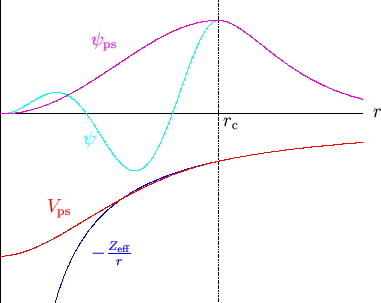



Next: Kinetic energy
Up: Computational implementation
Previous: Computational implementation
Contents
A quantity which is frequently required is the overlap matrix
 defined by
defined by
 |
(7.3) |
The overlap matrix elements between the spherical-wave basis functions can
be calculated analytically (section 5.4),
and are denoted
 where
where
 |
(7.4) |
so that the overlap matrix elements are given by
 |
(7.5) |
recalling that the support functions may be assumed real in the case of
 -point Brillouin zone sampling.
-point Brillouin zone sampling.
Subsections
Peter D. Haynes
1999-09-21
![]() defined by
defined by
